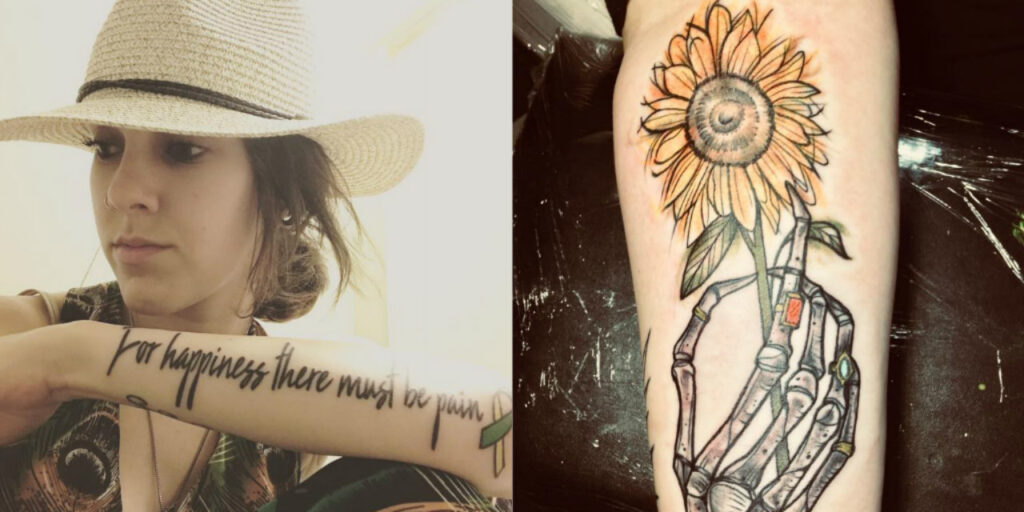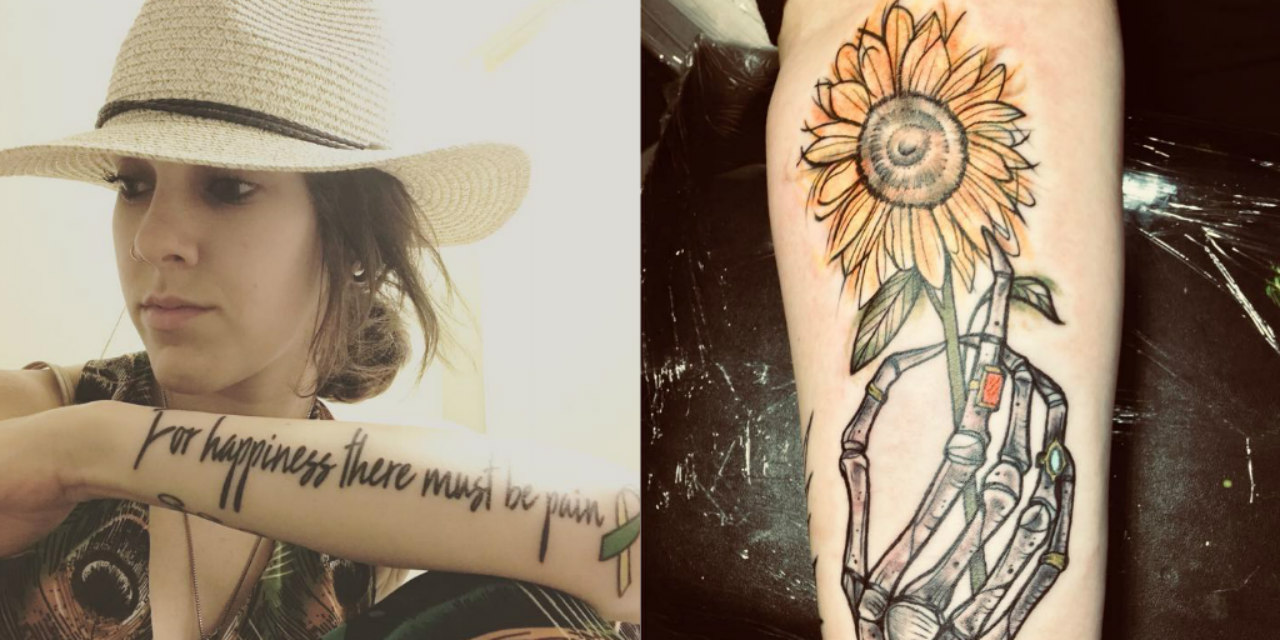
Empowering Ink: Exploring Rape Victim Tattoo Ideas for Healing and Reclamation
Choosing to get a tattoo after experiencing the trauma of rape is a deeply personal decision. For many survivors, it’s a powerful act of reclaiming their bodies and rewriting their stories. This article explores various rape victim tattoo ideas, focusing on their symbolism, meaning, and potential for healing. We aim to provide information and inspiration for those considering this transformative step, while emphasizing the importance of thoughtful consideration and professional support.
The Significance of Tattoos After Trauma
After experiencing sexual assault, survivors often feel a profound sense of disconnection from their bodies. A tattoo can serve as a tangible reminder of strength, resilience, and self-ownership. It’s a way to reclaim control over one’s physical form and transform a site of trauma into a canvas of empowerment. The process of choosing a design, selecting an artist, and undergoing the tattooing itself can be incredibly therapeutic.
The act of reclaiming their body is a crucial part of the healing journey for many rape victims. A tattoo is a permanent statement, a visual representation of survival and strength. It can be a way to rewrite the narrative, to take back what was stolen, and to declare ownership over one’s own skin.
Choosing the Right Design: Symbolism and Meaning
Selecting a tattoo design is a highly individual process. There is no right or wrong answer, and the most important factor is that the design resonates deeply with the survivor. Some popular rape victim tattoo ideas include:
- Butterflies: Representing transformation, rebirth, and freedom. The butterfly emerges from a dark chrysalis, symbolizing the journey from victim to survivor.
- Lotus Flowers: Growing from muddy waters, the lotus flower symbolizes purity, resilience, and overcoming adversity. It’s a powerful reminder of inner strength and the ability to rise above difficult circumstances.
- Phoenixes: A mythical bird that rises from ashes, the phoenix represents rebirth, renewal, and overcoming challenges. It’s a potent symbol of resilience and the ability to emerge stronger from trauma.
- Warrior Symbols: Symbols of strength, courage, and protection, such as swords, shields, or warrior goddesses. These tattoos can represent the survivor’s inner strength and determination to fight for their well-being.
- Quotes and Affirmations: Words of encouragement, strength, and self-love. These tattoos can serve as daily reminders of the survivor’s worth and resilience. Examples include “I am strong,” “I am a survivor,” or “My body, my choice.”
- Semicolons: Representing a sentence the author could have ended but chose not to. In the context of trauma, it signifies that the survivor could have given up but chose to continue their story.
Beyond these common symbols, many survivors opt for designs that hold personal significance. This could be a favorite flower, an animal that represents their spirit, or an abstract design that embodies their healing journey. The key is to choose a design that feels empowering and meaningful.
Placement: Honoring the Body and Healing Scars
The placement of a tattoo is another important consideration. Some survivors choose to cover scars from the assault, transforming a site of trauma into a work of art. Others prefer to place the tattoo on a different part of their body, as a symbol of reclaiming ownership and control. Common placement areas include:
- Wrists: Easily visible, serving as a constant reminder of strength and resilience.
- Back: A larger canvas for more elaborate designs, symbolizing inner strength and protection.
- Shoulder: Representing strength and carrying the weight of the past.
- Ribcage: A sensitive area, often chosen for its personal and intimate significance.
- Thigh: A symbol of reclaiming sexuality and body ownership.
Ultimately, the placement should be chosen based on personal preference and the desired meaning of the tattoo. It’s essential to consider the visibility of the tattoo and how it will make the survivor feel in different situations.
Finding a Trauma-Informed Tattoo Artist
Choosing a tattoo artist is a crucial step in the process. It’s essential to find an artist who is not only skilled but also compassionate and understanding of trauma. A trauma-informed tattoo artist will create a safe and supportive environment, allowing the survivor to feel comfortable and in control throughout the process.
Here are some tips for finding a trauma-informed tattoo artist:
- Research: Look for artists who have experience working with survivors of trauma. Read reviews and testimonials to get a sense of their approach.
- Consultation: Schedule a consultation with the artist to discuss your design and concerns. Ask about their experience with trauma and how they create a safe space for their clients.
- Communication: Choose an artist who is a good communicator and willing to listen to your needs. They should be respectful of your boundaries and willing to adjust their approach as needed.
- Cleanliness: Ensure that the studio is clean and sterile. The artist should use disposable needles and follow proper hygiene practices.
A good tattoo artist will understand the emotional significance of the tattoo and will work with you to create a design that is both beautiful and empowering. They will also be mindful of your comfort level and willing to take breaks as needed. The goal is to create a positive and healing experience.
The Healing Process: Aftercare and Self-Care
After getting a tattoo, proper aftercare is essential to ensure proper healing and prevent infection. Follow the artist’s instructions carefully and be patient with the healing process. In addition to physical aftercare, it’s also important to prioritize self-care. Getting a rape victim tattoo can bring up a range of emotions, and it’s important to have a support system in place. Consider the following:
- Therapy: Continue or seek therapy to process the emotions that may arise during the tattooing process.
- Support Groups: Connect with other survivors through support groups or online forums.
- Self-Care Activities: Engage in activities that promote relaxation and well-being, such as yoga, meditation, or spending time in nature.
- Boundaries: Set boundaries with people who may be triggering or unsupportive.
Remember that healing is a journey, not a destination. Be kind to yourself and allow yourself the time and space to process your emotions. The tattoo is a symbol of your strength and resilience, and it’s a reminder that you are not alone.
Potential Challenges and Considerations
While a tattoo can be a powerful tool for healing, it’s important to be aware of potential challenges and considerations. Some survivors may experience:
- Emotional Triggers: The tattooing process or the sight of the tattoo may trigger painful memories or emotions.
- Social Stigma: Tattoos can still be stigmatized in some cultures, leading to unwanted attention or judgment.
- Regret: While rare, some survivors may regret getting a tattoo later on.
It’s important to carefully consider these potential challenges before getting a tattoo. Talk to a therapist or trusted friend to explore your feelings and ensure that you are making the right decision for yourself. If you do experience negative emotions after getting a tattoo, remember that it’s okay to seek help and support. Tattoo removal is also an option, although it can be a costly and painful process.
Examples of Empowering Rape Victim Tattoo Ideas
Here are a few more specific examples to spark inspiration for rape victim tattoo ideas:
- A broken chain: Symbolizing breaking free from the bonds of trauma and oppression.
- A single word: “Survivor,” “Resilient,” “Brave,” or another word that resonates with the individual’s journey.
- A constellation: Representing guidance and hope in the darkness.
- A compass: Symbolizing direction and finding one’s way forward.
- A tree with deep roots: Representing strength, stability, and growth.
Remember to personalize the design to reflect your unique story and healing journey. The most powerful tattoos are those that hold deep personal meaning.
Conclusion: Reclaiming Your Story Through Ink
Getting a tattoo after experiencing the trauma of rape is a deeply personal and empowering decision. It’s a way to reclaim your body, rewrite your story, and honor your strength and resilience. By choosing a meaningful design, finding a trauma-informed artist, and prioritizing self-care, you can transform a site of trauma into a canvas of empowerment. Remember that you are not alone, and your healing journey is valid. The decision to get a rape victim tattoo is yours, and yours alone. Take your time, do your research, and choose a design that empowers you to move forward with strength and hope. These rape victim tattoo ideas are just a starting point; the real power lies in creating something unique that speaks to your individual experience. For many, a rape victim tattoo is more than just ink; it’s a symbol of survival.
[See also: Overcoming Trauma After Sexual Assault]
[See also: Finding a Trauma-Informed Therapist]
[See also: Support Groups for Sexual Assault Survivors]

